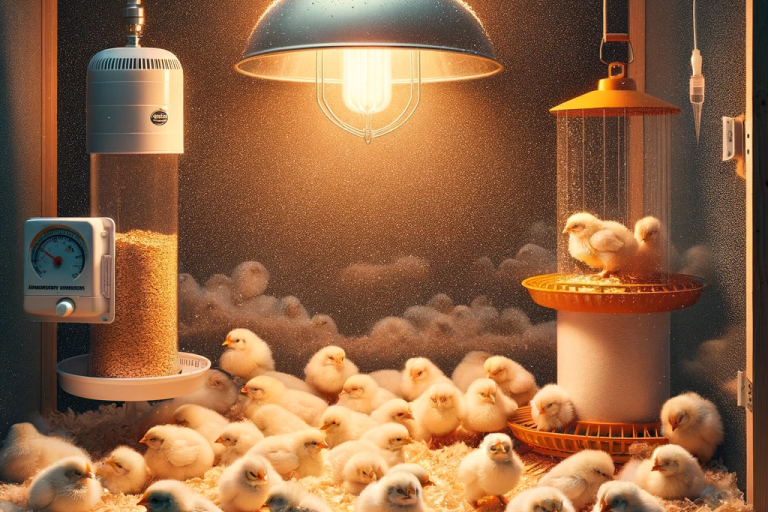Introduction: Bringing up baby chicks during the winter months presents unique challenges, but with the right knowledge and preparation, it can be a rewarding experience. Baby chicks require extra care and attention when the temperatures drop, and ensuring their health and safety during these critical early stages is paramount. In this blog, we'll explore essential tips for successfully raising baby chicks in winter.
1. Adequate Brooding Space: Your chicks’ first home, the brooder, should be warm, safe, and spacious. It should protect them from the cold and provide enough space for all chicks to move around comfortably. Use a large box or a commercial brooder and line it with absorbent bedding, such as pine shavings.
2. Consistent Heat Source: The most critical factor in raising chicks in winter is maintaining the appropriate temperature. Use a brooder lamp or a radiant heat plate to keep the temperature within the brooding area around 95°F for the first week. Gradually decrease the temperature by 5°F each week until it reaches the ambient temperature.
3. Monitor Humidity Levels: Along with heat, maintaining the right humidity level in the brooder is essential. The ideal humidity for baby chicks is between 40-60%. Use a hygrometer to monitor these levels. Too much humidity can lead to respiratory issues, while too little can cause dehydration.
4. Nutritious Feed and Fresh Water: Feed your chicks starter feed that is high in protein to support their rapid growth. Ensure that fresh water is available at all times, and check frequently to ensure it hasn’t frozen.
5. Safe and Secure Environment: Protect your chicks from potential predators and keep the brooding area draft-free. Ensure that any heating elements are securely placed to prevent fire hazards.
6. Gradual Introduction to the Outdoors: As the chicks grow and feather out, they will become more resilient to colder temperatures. Gradually introduce them to the outdoor environment on warmer days to help them acclimatize.
7. Regular Health Checks: Keep an eye on your chicks for any signs of illness or distress, such as lethargy, lack of appetite, or abnormal behavior. Early detection of any issues is key to ensuring their health and well-being.
Conclusion: Raising baby chicks in winter is certainly challenging, but it’s also incredibly gratifying. By providing a warm and comfortable environment, proper nutrition, and vigilant care, you can successfully raise a healthy and happy flock, ready to venture outside when the spring warmth arrives.
And now, here's an image that captures the essence of raising baby chicks in winter, illustrating the cozy and safe environment they need during the colder months.

